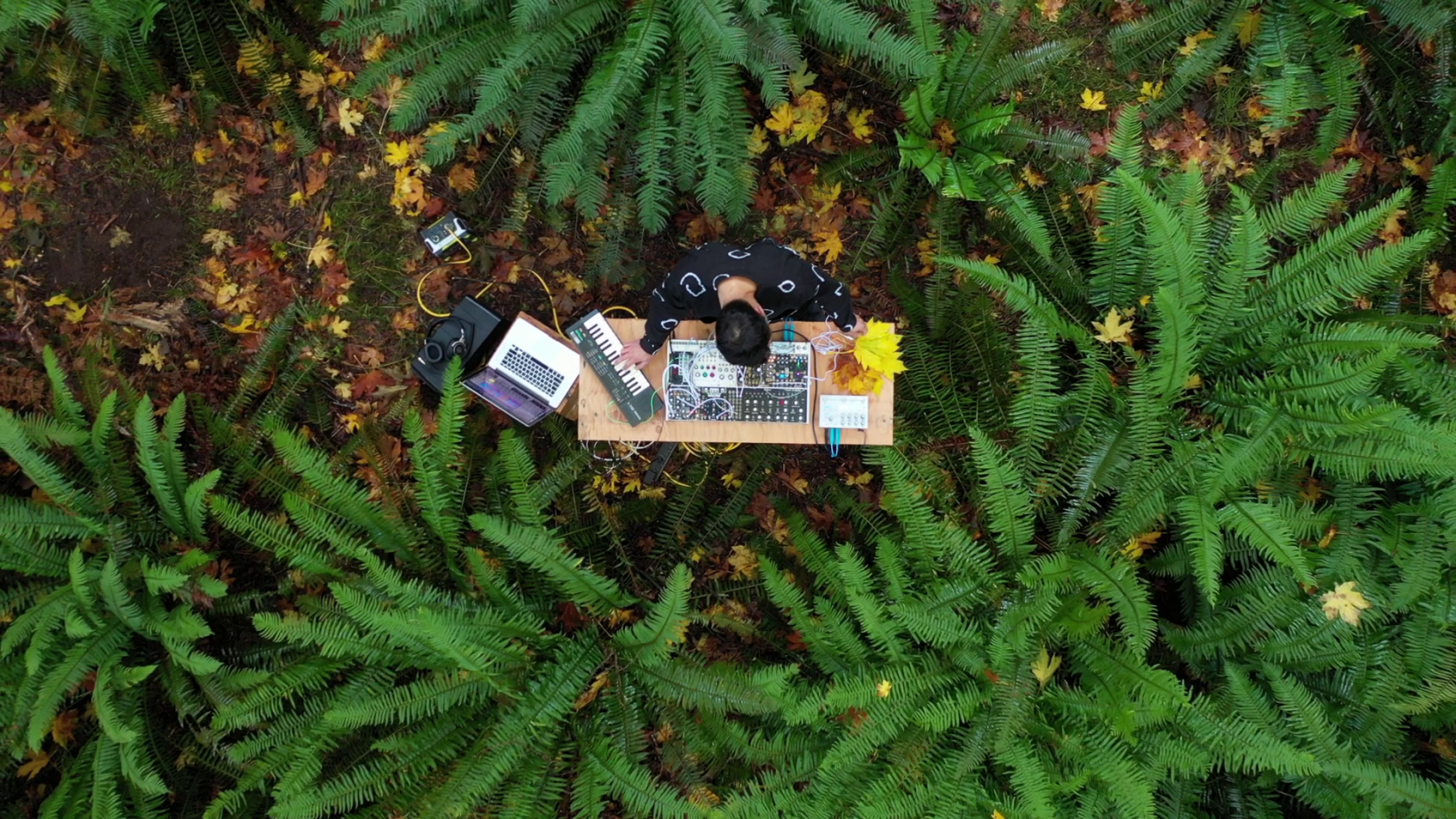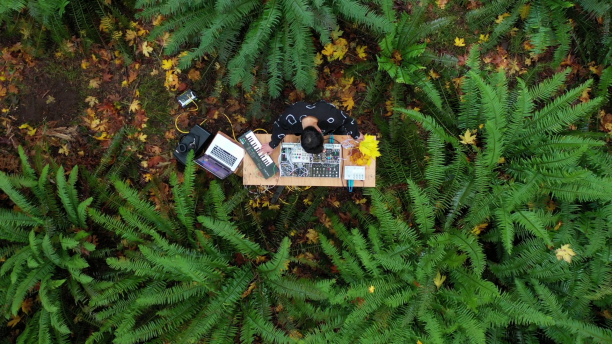The purity of an artwork often belies the dirty materials that went into its making: toxic paints and glazes in painting and ceramics; poisonous particulates in the process of sculpting and smelting objects. A current generation of artists views the materials themselves as part of the artistic narrative, especially when that narrative is an environmental one. Hear from Lily Kwong, whose installations made of plant materials comment on our relationship with flora and fauna; Julia Christensen, who protests e-waste and the upgrade economy through a conceptual spaceship flying light years that has to regenerate itself; and Elizabeth Corr, director of art partnerships at NRDC who curates projects that fuse art and advocacy. But is this didactic art also good art? And how effective is the message? The panel will close with a "bio-sonifying" performance by Modern Biology. The conversation will be moderated by design researcher Jason E.C. Wright.
About Art for Earth's Sake
Artists are increasingly exploring the climate crisis in their work. What about the art world’s contribution to the climate crisis, from its boundless international travel to the growth of energy-intensive art forms and installations? MOCA considers the creative ways in which the art world is addressing its own environmental footprint in Art for Earth’s Sake, a series of five public presentations and panels, taking place in fall, 2022. Invited artists, academics, activists, industry insiders and journalists will explore topics ranging from greening art facilities and art fairs to reckoning with environmental justice. Finally, the program will consider the impact of making the industry more sustainable on artistic expression itself.
About Julia Christensen
Julia Christensen is an artist and writer whose work explores systems of technology, time, change, and memory. She is President of the Space Song Foundation, a non-profit organization that designs technology for long-term space missions that transcend contemporary cycles of obsolescence. Christensen has been awarded the Guggenheim Fellowship (Fine Arts, 2018), LACMA Art + Tech Lab Fellowship (2017-2018), Creative Capital Fellowship (Emerging Fields, 2013), MacDowell Fellowship (2015), and the Ohio Arts Council Individual Excellence Award (2015). She has been awarded artist residencies at the MacDowell Colony, Wexner Center for the Arts Film + Video Studio, Media Archaeology Lab, and the Experimental Television Center. Her work has been exhibited at the Los Angeles County Museum of Art (Los Angeles, CA), Walker Art Center (Minneapolis, MN), Ronald Feldman Fine Arts Gallery (NYC, NY), Museum of Contemporary Art Cleveland (Cleveland, OH), the Carnegie Museum of Art (Pittsburgh, PA), and internationally in India, Greece, France, and beyond.
Christensen is the author of Big Box Reuse (MIT Press, 2008), about how communities are reusing abandoned Walmart and Kmart stores in the US. Big Box Reuse won several prestigious book awards, including the American Association of Academic Press’s Book of the Year Award in the category of trade non-fiction. Her second book, Upgrade Available (Dancing Foxes, 2020), is a product of her long-term art/research project about how “upgrade culture” impacts life on a range of time scales. Christensen’s work has been featured in publications such as The New York Times, New York Magazine, Bookforum, The New York Review of Books, Village Voice, and Art in America, and on radio shows such as All Things Considered (NPR), and On Point (NPR). She has spoken widely about her work at a range of venues, including Yale University, Columbia University, Carnegie Mellon University, Idea Festival, and the Dreamworks Animation studios. Christensen is Chair of the Studio Art Department and Professor of Art at Oberlin College. She is a board member of The Center for Land Use Interpretation in Los Angeles.
About Elizabeth Corr
Elizabeth Corr collaborates with artists, writers, museums, and cultural institutions to heighten public awareness of and interest in environmental issues facing communities. Her work curating public art exhibitions and programming has created an innovative platform for thoughtful and sustained collaboration between art and environmental leaders. She launched NRDC’s Artist-in-Residence program and has been expanding support for NRDC’s art and climate-related projects from such organizations as the Robert Rauschenberg Foundation, the Public Concern Foundation, and the Pulitzer Foundation for the Arts. Corr also leads key initiatives for NRDC’s Rewrite the Future program, which aims to help Hollywood tell more nuanced and varied stories about the climate crisis. A nominee for the inaugural Pritzker Emerging Environmental Genius Award, her work has been featured in publications such as The New Yorker, Earther, and PRI. She is based in NRDC’s Chicago office.
About Lily Kwong
Lily Kwong is a next-generation landscape artist with roots in the urban planning and art worlds whose mission is to reconnect people to nature. Lily specializes in creating transformative environments that combine horticulture, design, education, and visual arts to create cultural experiences that harmonize people with their environment. She earned her degree in Urban Studies from Columbia University and is an important voice in the growing sustainable movement.
Lily was named by The New York Times as one of the '9 Young New Yorkers Poised for Creative Greatness' and inducted into Forbes’s '30 Under 30: 2018' in the Art & Style category. She served as Landscape Editor for Cultured Magazine and was a member of the NEW INC program, the New Museum’s incubator. Studio Lily Kwong's botanical art installations have been featured on The High Line, Grand Central's iconic Vanderbilt Hall, the Whitney Museum shops, and more.
About Modern Biology
Modern Biology has brought 'plant music' to the masses. Originally educated as a biologist, veteran musician Tarun Nayar brings his passion for nature and sound together in an ambient project that is organismic, immediate, uplifting, and deeply contextual. He uses modular synthesis, home built synthesizers and other analog equipment to improvise with the natural vibrations of a certain place and time - via plant bioelectricity, latent electromagnetic radiation, and even the earth’s resonant hum. Trained from childhood in Indian classical music, he uses the system of Indian raga to mold his musical choices for time of day and season. His performances are an effort to bring the listener into the present moment through vibration, space, and connection. His work has been viewed 10s of millions of times and amassed him over 600K followers on TikTok (@modernbiology), has been featured by The Guardian, NBC, BBC, Genius, Vice, The Verge, and DJ Mag among others. His recent albums have received editorial support on Spotify’s Music for Plants, Deep Listening, and Lava Lamp playlists.
Tarun is passionate about protecting wild places and has committed the lion's share of the proceeds of this project to supporting the natural world.
About Jason E.C. Wright
Jason E.C. Wright is a designer, researcher, writer, and moderator. He is Founder and Director at Burntsienna Research Society, and author of ‘The Burntsienna Standards’, a rubric for responsible design research.
As a writer and moderator, Wright frequently contributes as a thought leader in various spaces and publications, and leads design, copy, and viability studies through Burntsienna’s think tank and research practice. He is based in Los Angeles, on the unceded lands of the Tongva people.
Art for Earth’s Sake is organized by Frances Anderton and Livia Mandoul.
MOCA’s environmental programming series highlights the museum’s work around climate, conservation, and environmental justice. Guided by the work of the MOCA Environmental Council, the first sustainability council at a major arts museum in the United States, this series presents artists, activists, and scholars committed to critical ecological issues in Los Angeles and globally.
The 2022 series is made possible by Nora McNeely Hurley and Manitou Fund.

